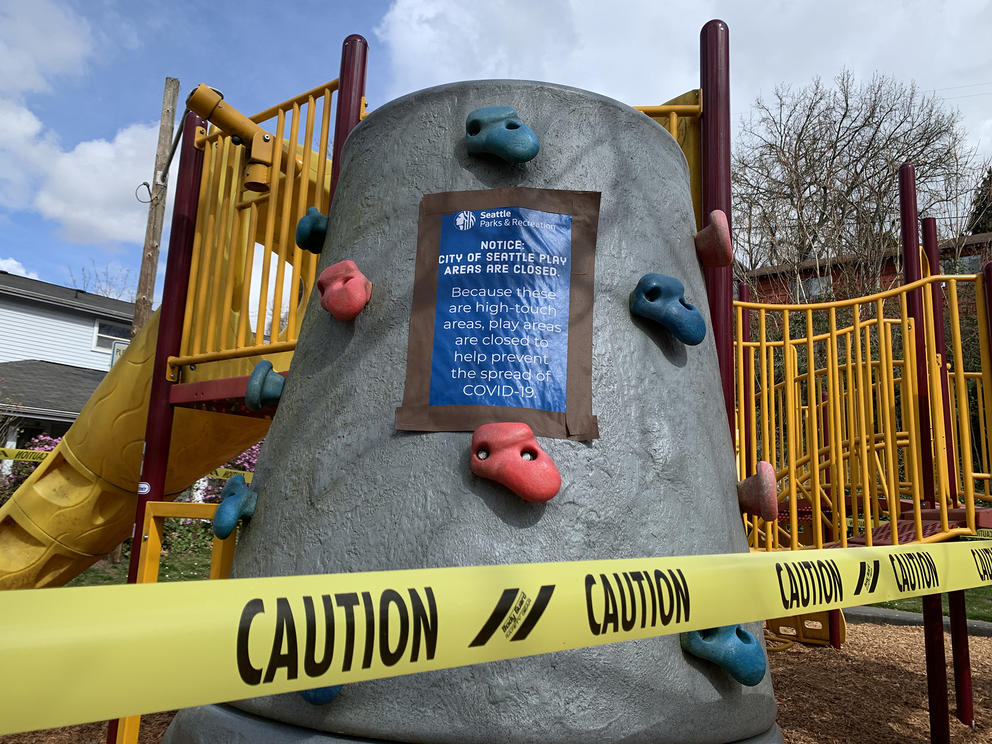Coronavirus has changed our reality for the foreseeable future, prompting questions from you about how to navigate our strange new normal. In this new weekly column, we hope to answer them with practical advice, ideas and solutions. Ask your question at the bottom of this story.
Question: We’re ordered to stay at home and away from other people. Can I do (insert outdoor activity here)?
Thousands of Washingtonians might have the coronavirus; all of us definitely have cabin fever. Understandably, the degree to which we can go outside during a pandemic is perhaps the most-asked question of late at Crosscut, in the widest possible variety. “Can I: Go fishing? Play golf? Ride golf carts? Go on motorcycle trips? What about with my wife? Start a cross-country road trip to the coast? To my vacation home? Playground? Tennis? Pickleball? Basketball? Backcountry skiing? Ride and groom horses at the place where I board my horses?”
The answer, respectfully, in all those cases is: Please don’t.
The inevitable follow-up questions: Why not? Is it really that big of a risk? Science cannot provide perfect answers yet. Researchers are still scrambling to understand how COVID-19 operates and spreads; for all we learn about fomites and protein spikes, we still don’t know the limits of airborne transmission. We might not for years.
Seattleites by and large follow the rules. (The number of ugly stares I’ve accrued for my New York-informed jaywalking habit is proof enough of that.) But all it takes is a marathon stretch of rare spring sunshine and getting grounded by coronavirus to bring out everyone’s inner rebel. Two weeks ago, officials and rangers reported peak-summer crowds in trails and parks, prompting the closure or restriction of access to most state and federal public lands.
For now, responsibility overrules research. Halting the disease’s spread and severity requires that we stay at home, inside (mostly) and collectively choose to go a little Jack Torrance together. Reporter Mandy Godwin shared the Washington Trails Association’s useful rule of thumb: “if you have to drive, it's probably too far.”
RELATED: National Forest trailheads close after ‘stay-at-home’ prompts rush to the outdoors
I know, I know: “But Teeeeed, what if I promise to get there on the remaining gas in my tank? And socially distance on the rare empty trail? And not spend a single extra minute in the struggling rural community that lacks the resources to treat its aging population, should my asymptomatic self get out to pee?”
Airtight strategy aside, wilderness accidents and mishaps could spell disaster for the emergency personnel who would need to come to your rescue. (This harrowing account of an avalanche rescue in Colorado encapsulates how COVID-19 stresses the lives and resources of medical personnel who moonlight in search-and-rescue operations.) You don’t even have to be in the wild: The chain of risk to medical personnel begins increasing as you leave the driveway.
Loads of guilt-tripping memes are built on the idea that defeating this pandemic simply requires those who aren’t essential workers to bear the risk of being bored and couch-bound rather than actually risking their lives. But the balm the outdoors offers for mental health is very real for so many people, especially during these anxious times. And even though physical health takes precedence right now, there are ways to access contact highs from nearby nature.
Judging by the Boston marathon outside my window, running is an option almost everyone seems to be trying out (though we can’t say that’s completely risk-free — the same goes for biking). The easiest answer is probably the one you’re tired of hearing: lots and lots and lots of walking. Nature writer Emma Maris offers a Twitter thread of helpful suggestions to help you upgrade your bipedal game — ideas like learning how to identify all the trees on your block, or letting your children guide an urban curiosity hike.
You can even access some of those benefits from said couch: Research suggests that nature-based imagery and video offers similar positive effects as the real thing. For my money, Netflix’s Our Planet does the trick: Few things sanitize the viral load of a day spent refreshing a bad-news browser like David Attenborough leading me through gorgeous wilderness vistas and guaranteed wildlife sightings. Video games like Firewatch (suggested by Crosscut’s in-house game guru Beatriz Costa Lima) approximate the wilderness of Wyoming in exquisite, interactive detail.
If you’re like me, you might need to spike your vicarious or nearby nature with activity and forward momentum. Banish cabin fever with planning: This is an ideal time to cook and dehydrate shelf-stable meals; to explode, audit and weigh summer packs and kits; to research epic routes, trips and permits; or to maintain gear and equipment. Use this time well, and you’ll be beyond ready when our (likely delayed) outdoor season arrives.
Confession time: A few weeks ago, my addiction broke my resolve. I found my preloaded pack and prepped to escape on a one-gas-tank trip where I could guarantee a social distance of at least 12 miles between me and the next human. Like you, I rationalized it. A simple, restorative overnight would do a lot to ease the frazzle of bathing in the coronavirus every second of every day, of worrying whether the beloved boomers in my life could stay the eff out of Costco because they forgot cumin. The allure was too strong, the fix too near. I opened the trunk of my car to expose the embarrassing tossed salad of gear that perennially lives there: microspikes, pretzels, tents and a nub of old-but-probably-not-too-old cheese.
I never left for the trailhead. Instead, I started reorganizing my car — sourcing containers and storage solutions so campmates stop asking why I allow a hoarder who got fired for stealing from Second Ascent to sleep in my trunk. Did giving up on a precious chance at wild sanity sting? And how. But for once, it felt better to follow the rules.



